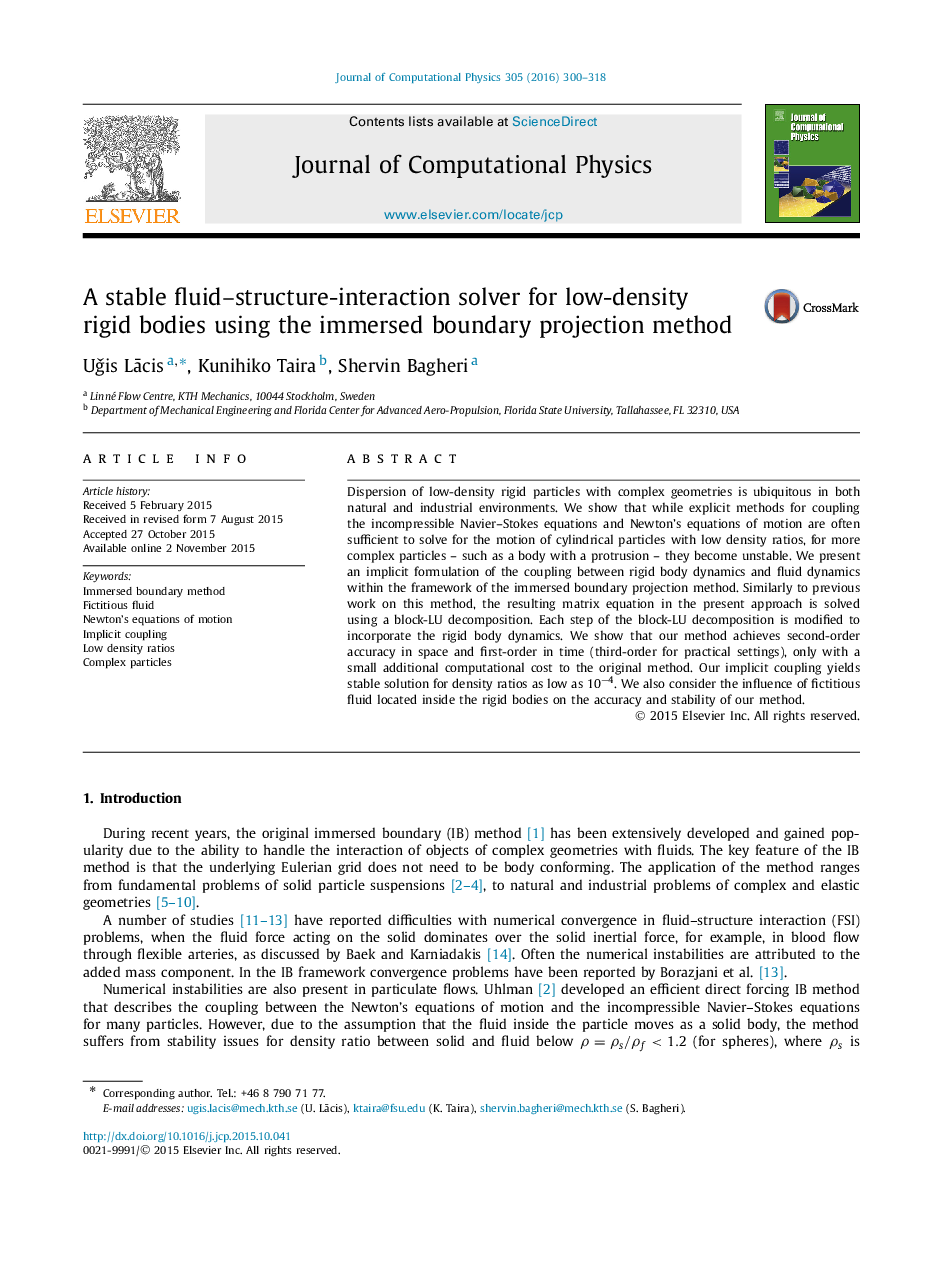| Article ID | Journal | Published Year | Pages | File Type |
|---|---|---|---|---|
| 6930855 | Journal of Computational Physics | 2016 | 19 Pages |
Abstract
Dispersion of low-density rigid particles with complex geometries is ubiquitous in both natural and industrial environments. We show that while explicit methods for coupling the incompressible Navier-Stokes equations and Newton's equations of motion are often sufficient to solve for the motion of cylindrical particles with low density ratios, for more complex particles - such as a body with a protrusion - they become unstable. We present an implicit formulation of the coupling between rigid body dynamics and fluid dynamics within the framework of the immersed boundary projection method. Similarly to previous work on this method, the resulting matrix equation in the present approach is solved using a block-LU decomposition. Each step of the block-LU decomposition is modified to incorporate the rigid body dynamics. We show that our method achieves second-order accuracy in space and first-order in time (third-order for practical settings), only with a small additional computational cost to the original method. Our implicit coupling yields stable solution for density ratios as low as 10â4. We also consider the influence of fictitious fluid located inside the rigid bodies on the accuracy and stability of our method.
Related Topics
Physical Sciences and Engineering
Computer Science
Computer Science Applications
Authors
Uǧis LÄcis, Kunihiko Taira, Shervin Bagheri,
